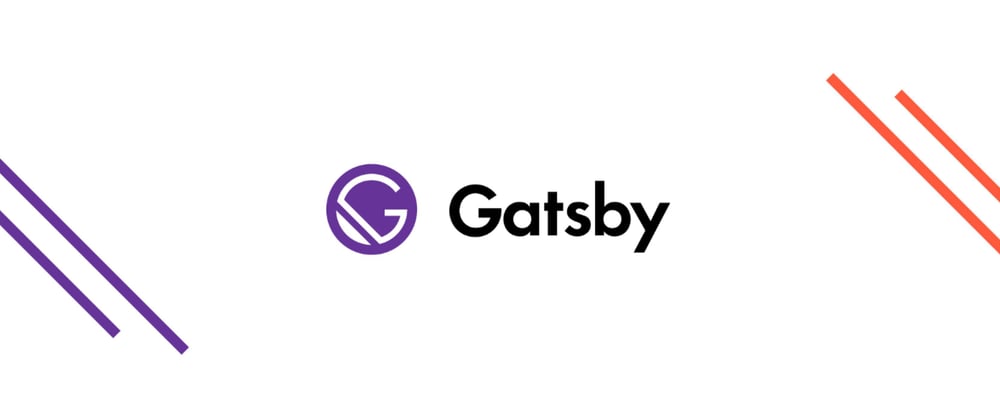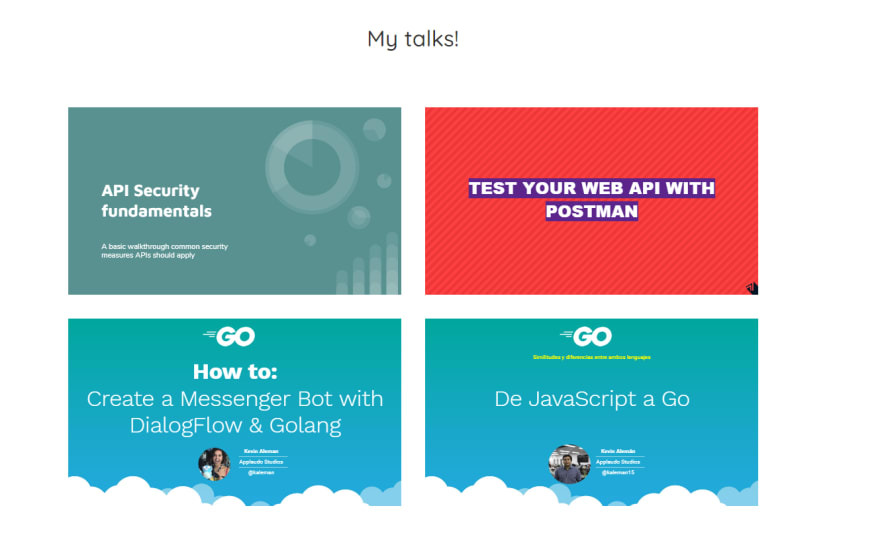I'm a backend developer, so most of the time I'm doing backend things. I feel stressed most of the time when I need to do something at the front.
Then, I started to build my own personal site. And it was great! It's a blog site located temporarily at Netlify where you can contact me, read what I wrote, share my content with a suggested tweet, and now you can see the talks I've given in my career.
The talks are mostly about basic topics, one of them is in progress yet, but I wanted to showcase that I made them. And this was when the trouble begins
How?
The first thing was to define what I wanted: I wanted to showcase my presentations. This was easy (in my mind), but, it wasn't easy in real life.
To give you more context, I store all my presentations in Google Drive, so I can work on them wherever I go. This makes things easier for working on them, but a little bit hard if you want to show them offline.
Why? Because first, you have to download the file. This is a no-brain task with a UI, just right-click and download. GG. The task gets more complex when you want your code to perform that process. So I walked a lonely road, the only one that I have ever known: looking for someone who tried the same and succeeds.
I found multiple Gatsby plugins by just typing drive or google drive into the search box. I tried every single one, with the hope of finding what I wanted. Here's a list of the highlighted ones if you are trying to do something similar:
- The problem: the use case I had in mind was very different from what the library did
- The problem: it only allowed me to download DOC files (not presentations, which was what I wanted)
- The problem: it didn't work. Maybe I misconfigured something or so.
- The problem: it only allowed me to download Sheets. I'm pretty sure this was based on
gatsby-plugin-drive)
So, since no plugin was able to fulfill my needs, I had to make a difficult decision:
- Give up on my feature
- Create my own plugin
I took the second, and this plugin was the result: Gatsby-plugin-googledrive
The entire plugin was based on a single idea: given a Google Drive's folderID, download all files from the folder, and traverse the subfolders recursively to create the same structure on your selected destination. And download the files for each folder.
The technical details can be found at the GitHub of the project and, it's open-source, so if you want to build something around it feel free to do so.
How? Part 2
After creating my plugin, I "plugged" it and the download started. I finally had the files on my local, and this was one step closer to my goal.
I had the PDFs on my local, now, I wanted to do 3 things:
- Get the URL from the PDF in my filesystem (and application!)
- Get the first page of the PDF (the "cover page")
- Convert that page to an image, and show it on a nice grid
Soo, I needed 3 things:
- One way to get the PDF from my filesystem
- One way to read the PDF
- One way to convert the read PDF into images
For the first item, since I'm using Gatsby, I used the gatsby-source-filesystem to read my folder and get the actual asset URL pointing to my file. It was really easy, just added this to my gatsby-config.js file:
{
resolve: "gatsby-source-filesystem",
options: {
name: "talks",
path: "${__dirname}/src/talks/",
},
}
And that's it! Then, to query my filesystem and get the nodes with data, some graphql was needed:
query {
allFile (filter: {sourceInstanceName: { eq: "talks" } }) {
edges {
node {
name
publicURL
}
}
}
}
That query will do 2 things:
- Get all the files under the
pathof theinstance namecalledtalks(which is thenameproperty you pass to the plugin definition) - For each
nodeakafile, get itsnameandpublicURL(which is the URL that the asset will have after the building)
For the second item, I had to do some research. After some looking, I finally found PDF.JS which is like the standard for managing PDFs in JavaScript. It was written by Mozilla and has a ton of useful functions. I just used the basic API to get my feature working in a few LoC.
PDFJS.getDocument(talk.publicURL).promise.then((pdf) => {
pdf.getPage(1).then((page) => {
// some code goes here
})
})
The introduction to the library in its GitHub page was simple, maybe too small for my taste, but it worked. With this, the only thing left was to find a way to convert the PDF page's data into an actual image.
I found a pretty nice approach to accomplish that. It worked like this:
- Read the PDF page
- Scale the page's width and height (by using the viewport of the page)
- Create a
<canvas>element - Set the canvas context to
2d(since we'll draw an image) - Set the scaled page as the new data context for the
canvas
The full code was linked in this StackOverflow's answer which even had an example of how it worked. Nice.
With all of that in place, the final result:
Hope you liked the article, feel free to also visit this post on my own website








Top comments (0)